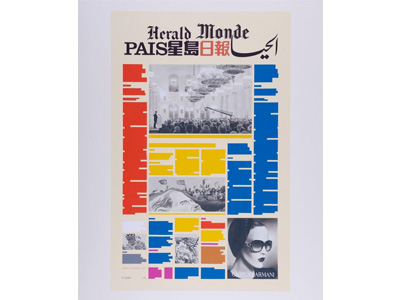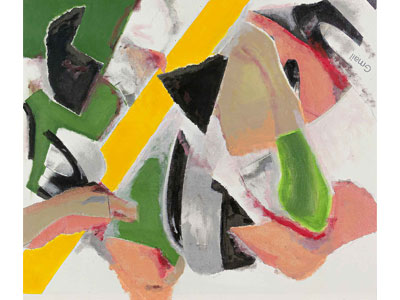Kamran Diba
Kamran Diba (b.1937, Tehran, Iran) studied architecture at Harvard University in Washington, D.C. from 1995 to 1998 and then completed a graduate course in sociology. After returning to Iran in 1966, in a period of a little more than a decade, he created valuable architectural works which are among the greatest works of modern Iranian architecture. Tehran Museum of Contemporary Arts, Niavaran Cultural Center, Shafaq Park, and Parviz Tanavoli's residential house are just some of Diba's lasting achievements in architecture. Diba's architecture is based on unique cultural insight and visual sensibility with a focus on improving the social and biological context. The "New Shushtar Town" project, which won the Agha Khan Architecture Award in 1986, is a globally admired work of architecture and urban planning.
Kamran Diba's visual art practice began in the 1960s when he started painting and at the same time was one of the pioneers of multimedia art in Iran. "Prodigal Waterman" (1967) in Seihon Gallery, Tehran, was an installation composed of various media including painting, writing, and sound, which is considered among the first examples of multimedia art and exhibitions in Iran. Some of his paintings from the period are kept in the collection of the Tehran Museum of Contemporary Arts. After the exile, Diba led a cosmopolitan life and made the cities of London, Cairo, Paris, Washington, and finally Malaga (Spain) his home, while he continuously painted alongside his professional work as an architect. Later, Diba's works were gradually exhibited in Tehran, including in Av Gallery (2007), Mah Gallery (2010), and Aran Gallery (2014). This is just a small part of his visual works during these years.
A number of aesthetic strategies might be observed in Kamran Diba's artistic periods. He has interacted with various artistic movements such as Abstract Expressionism, Pop Art, Nouveau Réalisme, and Conceptual Art. The synthetic, multimedia, and collage-based approach that was present in his early works still constitutes his fundamental artistic strategy. Social and political measures appear implicitly in his work, while his knowledge of the history of art and the evolution of the Modern form plays the main role in his visual structures.
Kamran Diba's visual art practice began in the 1960s when he started painting and at the same time was one of the pioneers of multimedia art in Iran. "Prodigal Waterman" (1967) in Seihon Gallery, Tehran, was an installation composed of various media including painting, writing, and sound, which is considered among the first examples of multimedia art and exhibitions in Iran. Some of his paintings from the period are kept in the collection of the Tehran Museum of Contemporary Arts. After the exile, Diba led a cosmopolitan life and made the cities of London, Cairo, Paris, Washington, and finally Malaga (Spain) his home, while he continuously painted alongside his professional work as an architect. Later, Diba's works were gradually exhibited in Tehran, including in Av Gallery (2007), Mah Gallery (2010), and Aran Gallery (2014). This is just a small part of his visual works during these years.
A number of aesthetic strategies might be observed in Kamran Diba's artistic periods. He has interacted with various artistic movements such as Abstract Expressionism, Pop Art, Nouveau Réalisme, and Conceptual Art. The synthetic, multimedia, and collage-based approach that was present in his early works still constitutes his fundamental artistic strategy. Social and political measures appear implicitly in his work, while his knowledge of the history of art and the evolution of the Modern form plays the main role in his visual structures.
Fairs
Contemporary Istanbul 2023
September 26 - October 1, 2023
September 26 - October 1, 2023






